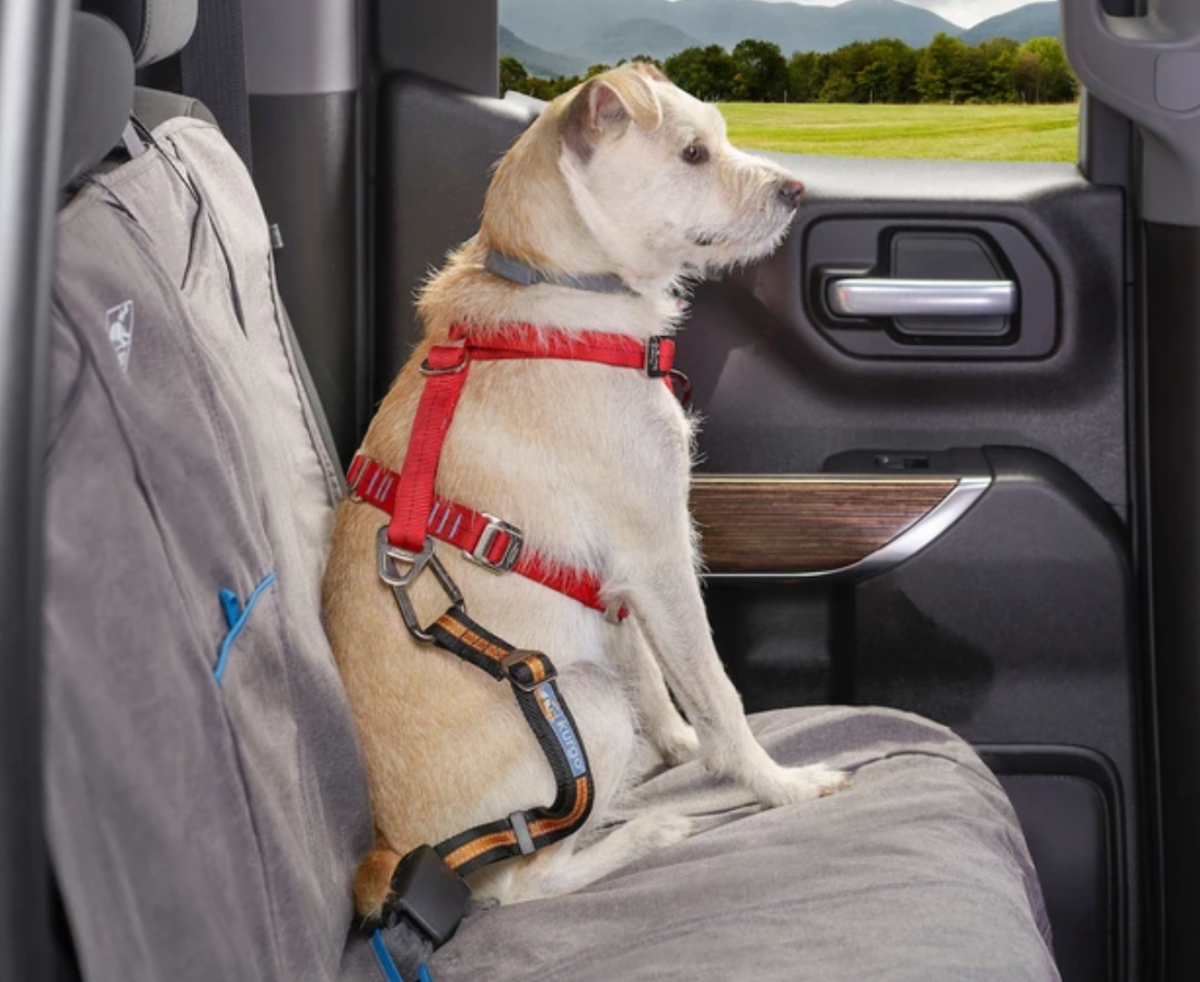
For years, Americans have been buckling up. The proper use of lap/shoulder belts have been shown to reduce the risk of fatal injury to front seat car occupant s by 45 percent, while reducing the risk of moderate to critical injury by 50 percent. Further research has shown that unbelted rear seat passengers increase the death rate of front seat passengers by up to 5 times. We buckle up ourselves and children to ensure all passengers safety, or do we? What about our pets?
With pet travel on the rise, more and more dogs and cats are suffering severe injuries from not being properly restrained. A pet that is not properly restrained in a vehicle is a danger to itself and other passengers in the vehicle. Even the best behaved pet travelers can get overly excited or frightened while riding in a car. This behavior can easily distract the driver, causing an accident. An unrestrained pet can potentially become a flying projectile in the event of a sudden stop or accident "a lethal danger" to the pet and other passengers in the vehicle. Unfortunately, instances of pets being thrown through the windshield are all too common in severe accidents.
The Dangers of Not Securing Your Pet
The dangers are more likely than one may think. A vehicle involved in an accident traveling at only 30 mph can cause a 15 pound child to create an impact of 675 pounds. Similarly, a 60 pound dog can cause an impact of 2700 pounds. Imagine the injury such an impact would cause for the helpless pet as well as other passengers.
Responsible pet parents need to take heed of the dangers of unrestrained pets. Many pet parents believe restraint is not necessary for "around town" travel like the bank, the post office, or the pet store. However, this is when most accidents occur.
Yet another important consideration is that in the event of an accident, a frightened pet may run out into traffic while rescue workers enter the vehicle to assist passengers. Or it may attack those who are trying to help. There are many pet vehicle restraint options available. Pet safety belts, pet car seats (with built-in seat belts), pet travel crates & kennels, and vehicle pet barriers are some excellent options.
Allow your Pet to Adapt to Vechicle Restraint
Selecting the proper restraint option, best suited for your dog or cat is essential. Whatever method you choose to properly restrain your pet in your vehicle, be sure to give your pet ample time to adapt.
For example, if you choose a travel crate, place the crate in your home and put some of your pets favorite toys or blanket it. Allow your pet to go in and out of the crate at its leisure. Eventually, put the crate in your vehicle and place your pet in crate. Start out taking short car rides and gradually increase the time until your pet is comfortable. If you choose a pet safety belt, let your pet wear the harness around the house. Allow them time to feel comfortable in the harness prior to strapping them in the car. Similar to the travel crate, start out with short car rides and gradually build up. No matter what method of restraint you utilize, back seat or cargo travel is the safest.
In addition to safety, make your pet's comfort a priority. Just as it's important for your "seat" to be comfortable your pet's seat should be comfortable too.
Let's all do what's right for our pets. Pets are members of the family and their safety is our responsibility.